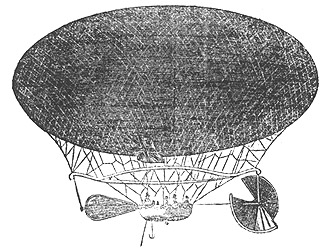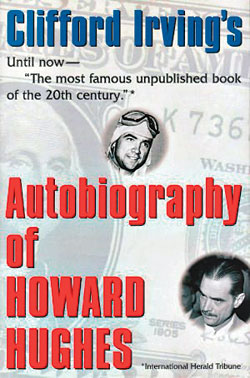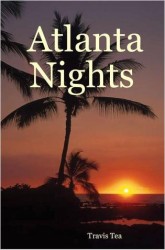 |
| By Nail Babayev (Own work) [CC BY-SA 3.0 (http://creativecommons.org/licenses/by-sa/3.0)], via Wikimedia Commons |
“Fante was my God,” Charles Bukowski wrote in the introduction to a later edition of Ask the Dust.
***
This post is the tale of a young punk and John Fante, author of Ask the Dust, Dreams from Bunker Hill, Wait Until Spring, Bandini, and more. They never met, they never talked, they never corresponded (though sort of), but one was greatly influenced by the other.
Some time before Fante died, the young punk discovered his work, especially his seminal work, Ask the Dust, about Arturo Bandini (Fante’s alter ego), a young writer struggling in Los Angeles in the 1930s. The young punk devoured everything of Fante’s he could get his hands on, and at that time not everything was in print as Fante hadn’t been rediscovered yet. The punk thought that Fante was speaking to him, writing about him. The punk related to Bandini’s struggles and aspirations.
Ask the Dust is Bandini’s story. Bandini was born to be a writer and he is more than excited when he sells his first short story. Fante, uh, Bandini, was a struggling writer living in the Bunker Hill section of Los Angeles in the 1930s (see my piece on Sleuth Sayers from 12/2016 – http://www.sleuthsayers.org/2016/12/remembering-los-angeles-bunker-hill-in.html for more on Bunker Hill). Even then the once-impressive neighborhood, filled with grand Victorian mansions, was rundown. Many of the mansions had been turned into cheap rooming houses. Both Fante and Bandini lived in cheap hotels there, Fante in the Alta Vista, renamed the Alta Loma for Bandini:
The hotel was called the Alta Loma. It was built on a hillside in reverse, there on the crest of Bunker Hill, built against the decline of the hill, so that the main floor was on the level with the street but the tenth floor was downstairs ten levels. If you had room 862, you got in the elevator and went down eight floors, and if you wanted to go down in the truck room, you didn't go down but up to the attic, one floor above the main floor. – John Fante, Ask the Dust
Bandini (Fante) traveled the streets of downtown LA, from Pershing Square to the Grand Central Market, where he liked to look for girls. Bandini was elated when he finally sold his first short story, as was the punk when he sold his first paid piece – an article on John Lennon.
Screenwriter Towne decided he wanted to make a movie of the book. His dream finally came true in 2006, with mixed results. But one thing that the movie got right was the sets, at least in tone. Built on two “football” fields in South Africa, they recreated the look and feel of the hot and dusty Bunker Hill of the 1930s. Maybe every little thing isn’t in the exact place it should be, maybe every little detail isn’t exactly right, but the overall ambience and milieu is there and you feel like you’re there among the hoi polloi and the people just hustling to get by. And you feel that you could run into Bandini – or Fante – in a diner or the Columbia Buffet on Spring Street.
***
And those images of the Bunker Hill that used to be linger still in the movie playing before the not-so-young-anymore punk’s eyes. A romantic vision of shabby gentility. Or maybe not so much gentility as seen in several noir movies that were filmed there in the 1940s and 50s, including Criss Cross, Kiss Me, Deadly and Cry Danger.
***
The young punk identified with Bandini and Fante. And even young punks who think they’re cool have idols and one of this young punk’s idols was John Fante. To that end, he decided to reach out to Fante.
As a young man, Fante had begun a correspondence with H.L. Mencken, journalist, scholar and co-founder of a magazine most of the readers here will know, Black Mask. The punk hoped to have a similar relationship with Fante. He sent Fante a long, 3 page single spaced typed letter. It was a fan letter, but also more than simply a fan letter, and the young punk hoped to begin a correspondence with Fante like Fante had had with Mencken.
The young punk had done a lot of things like that, writing to a lot of well-known people. Got letters back from some, phone calls from others (Cary Grant), and was even invited to Gene Kelly’s house. And from others nothing. As time went on, the punk started to lose hope that he would ever hear from Fante.
Even though Fante eventually had success in Hollywood, writing movies like Full of Life, Walk on the Wild Side and others, he never seemed like a happy man. He thought of himself as a well-paid Hollywood whore. And the punk knew that Fante was bitter and angry and in failing health. He never did hear back. He figured Fante was too sick or too angry or both.
On April 8, 2010, John Fante’s 101st birthday, Fante Square was dedicated in downtown L.A., near Bunker Hill. The area may have changed a lot, but the spirit of Fante and the old Bunker Hill is still there.
Fante died on May 8, 1983 and the not-so-young punk liked to think that maybe Fante read his letter or a family member read it to him before he died. And the punk kept writing, hoping to someday be able to say “I am Arturo Bandini.”
Books by Fante:
The Road to Los Angeles (1936, publ.1985)
Wait Until Spring, Bandini (1938)
Ask the Dust (1939)
Dago Red (1940), short story collection
Full of Life (1952)
Brave Burro (book, with Rudolph Borchert) (1970)
The Brotherhood of the Grape (1977)
Dreams from Bunker Hill (1982)
The Wine of Youth: Selected Stories (posthumously, 1985), Dago Red and short story collection
1933 Was a Bad Year (post., 1985; incomplete)
West of Rome (post., 1986), two novellas
Fante/Mencken: John Fante & H. L. Mencken: A Personal Correspondence, 1932–1950 (post., 1989), letters
John Fante: Selected Letters, 1932–1981 (post., 1991), letters
The Big Hunger: Stories, 1932–1959 (post., 2000), short story collection
###
And now for the usual BSP:
Coming on January 30th from Down & Out Books:
Coast to Coast: Private Eyes from Sea to Shining Sea
A collection of 15 Private Eye stories from some of the best mystery and noir writers from across the country. Available for pre-order now on Amazon:

And I have a couple of appearances in January.
Santa Clarita: The Old Town Newhall Library
Saturday, January 14, 2017, from 10:00 AM-3:00 PM.
24500 Main St, Santa Clarita, CA 91321
Cerritos Library, where I’ll be moderating a panel:
Saturday, January 28 from 11 a.m. to 4 p.m.
18025 Bloomfield Avenue, Cerritos, CA 90703
Coming on January 30th from Down & Out Books:
A collection of 15 Private Eye stories from some of the best mystery and noir writers from across the country. Available for pre-order now on Amazon:

Santa Clarita: The Old Town Newhall Library
Saturday, January 14, 2017, from 10:00 AM-3:00 PM.
24500 Main St, Santa Clarita, CA 91321
Cerritos Library, where I’ll be moderating a panel:
Saturday, January 28 from 11 a.m. to 4 p.m.
18025 Bloomfield Avenue, Cerritos, CA 90703









